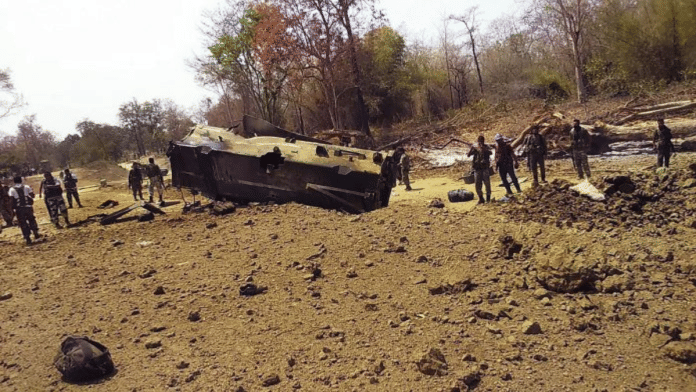Thank you dear subscribers, we are overwhelmed with your response.
Your Turn is a unique section from ThePrint featuring points of view from its subscribers. If you are a subscriber, have a point of view, please send it to us. If not, do subscribe here: https://theprint.in/subscribe/
I did 11 years at school. I never tried to reason why the Anglo Indian Board did not have 10 or 12 years of schooling as did all other boards in the late 1960s. If they had followed other boards, possibly, I would have joined the 40th course in NDA and missed out on all the fun in life with the 42nd.
In the event that extra year in my school in Kannur, on the West coast in North Malabar in North Kerala, exposed me to Naxalism from close quarters.
On 22nd November 1968, a group of about 300 armed guerrillas made an unsuccessful attempt to attack the Thalasseri police station. (Thalasseri is a town 10 miles North of Kannur. This police station is bang on the main road from Kannur leading to my then home in Calicut. I was a boarder in Kannur.) The members of the unsuccessful group fled and went into hiding. But within 48 hours, another group of revolutionaries, armed with country-made guns and bombs, attacked the police station at Pulpally (about 30 miles NW of Thalasseri) in Wayanad. One police wireless operator was killed and many policemen including the sub-Inspector of police were injured in the attack.
The stunning specialty in that attack was its leader, a 19 year old woman, Ajitha. For good measure, before withdrawing from the scene of mayhem, she left her right palm impression in blood on an inner wall of the police station. Another notable fact was the assailants did not carry a single regulation weapon. In 1968 these were unprecedented incidents which did create turmoil in the already restless populace in the Malabar. That was my first exposures to the Naxalite movement. Ajitha was captured in 1969 in Wayanad. As a revolutionary and later political prisoner this young woman’s name has been recorded for posterity in her state.
The Naxalite movement never really took off in Kerala. The notion then among a large section of the public in Malabar was that a Naxalite is one who likes his/her nation more than the rest of us, and is hence more concerned than the rest of us when people suffer. The economy of Kerala, which then had not started getting remittances from the Middle East, was tottering.
During her time in prison, mostly under solitary confinement, Ajitha’s feminist sensibilities were slowly coming to the fore. Ajitha served close to 8 years before being released by the state. In a brief meeting in 1979, Ajitha seemed then, a soft spoken and normal human being. Ajitha, later got involved in activities for social uplift of women in Kerala.
A successor to the failed Naxalite movement in Kerala was the ‘Wayanad Samskarika Vedi (Wayanad Cultural Forum)’ which blossomed to Janakiya Samskarika Vedi (Democratic Cultural Forum). The forum positioned itself as a movement involved in establishing its own cultural sphere of thoughts and ethics against the prevailing (thought to be) bourgeois ethos. Aligned to the left, it failed to clearly separate the cultural push from the political assaults. Consequently, this movement also petered out. During my many holidays in my town in the 70s and 80s I had met a few of these activists who staged street plays professing their cause.
I feel I saw the Naxalite movement in its purest form. It was not surprising then, given our state of the economy at that time and remnants of a feudal system (my family has lost some leased out farmlands in central Kerala to the land reforms act of the Left Government of the state in the mid 60s) still in vogue a large section of the people probably was Naxal sympathizers. In Kerala the proximity of the common man to then Naxalites like Ajitha helped both sides to see reason before the situation worsened.
On joining the National Defence Academy in 1969, I lost track of this movement largely because it had failed (or in fact, did it succeed in its social aim by disrupting the society in Kerala? The jury is still out on this one) in my state – and I thought if it had failed in Kerala, it cannot succeed anywhere. I am probably right and wrong. Wrong because the movement by another name (Maoists) seems to be creating ripples in many parts of our country; right because the cause has been diluted by the proponents by seeking external help, thereby becoming an anti-national movement.
Incidentally, Wayanad, the cradle of the failed Naxalite movement in Kerala is now a relatively new and prosperous district which is also a much sought after holiday destination both by domestic and international tourists. Recently, it has also, become a VVIP constituency in the lower house of parliament. Societal changes for the better can come about only with people’s involvement; it can’t be legislated.
Col KL Viswanathan an Indian Army veteran and a contemporary affairs commentator. The views are personal.
These pieces are being published as they have been received – they have not been edited/fact-checked by ThePrint


